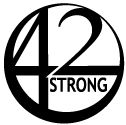I first came to New Orleans as a soldier. Hurricane Katrina had flooded the city, causing a massive evacuation and recovery effort. I spent my last month on active duty navigating the debris-strewn and waterlogged streets of a Hollywood-style apocalypse film set.

I don’t know what New Orleans looked like before Katrina, but it is certainly a beautiful place now. Morning runs along the Bayou St. John and through City Park showcase some of the city’s open spaces and urban art. People say hello in passing, a habit I had to break when I moved to New York City. I find it returning with ease. We are spending the week with some friends who moved to the Crescent City for work in Katrina’s aftermath and stayed to make it their home. Over drinks and in the midst of the maelstrom of their children’s mad energy, we catch up on each other’s lives and reminisce about older times.

On borrowed bikes we ride along the Lafitte Greenway into the French Quarter. The greenway is a wide and well-maintained bike path, bordered by several neighborhoods where efforts to rebuild either stalled or have fallen back into a slow state of decay. Vines pull at fences, paint peels on sagging walls and a chain link fence separates the greenway from a rusty and disused warehouse surrounded by various species of urban debris.
It is early in the week and the French Market is quiet. Tourists stroll the arcade of the old market in isolated pockets. A man sits alone at a seafood grill in the market, his elbow resting on the wooden bar, gazing languidly into the distance. Tonight a crawfish boil, hosted by a friend of a friend, awaits and we don’t want to be late, so we grab a small bite and a beer, snap a few photos and take the greenway back to Mid-City. I get a flat along the way.

Tourism is big in the Big Easy and tourists cycle through the French Quarter like balls on a spinning roulette wheel. The second time we enter the Quarter, the wheel is in full spin. Frat boys in polo shirts chug bright liquids from neon-colored and bulbous plastic mugs, cheering each other on in a frenzy of blind youth. One finishes his concoction, burps and throws a bright oversize party straw onto the sidewalk. Girls in loud skirts laugh and the woman selling voodoo tours next to me makes a sound of disgust and shakes her head.

We came to the French Quarter this time to get a tarot card reading. This has become a welcome New Orleans ritual for us. I like tarot. I enjoy telling stories and as I understand it, tarot is a way of understanding your past and present by making a story that links them together. The person getting the reading, can then build upon that story to craft some desired future. That tarot isn’t considered a legitimate form of therapy is at least somewhat an injustice, in my opinion.

I sit down in the back of Reverend Zombie’s House of Voodoo and draw ten cards from an old deck. The cards feel satisfyingly solid in my palm. The tarot reader, a thin, soft-spoken man of perhaps sixty, arranges them on the table and together, we weave a story of struggling with grand tasks, of being overcome and losing one’s way, of the search for new beginnings and of how one finds their own direction through life by helping one’s partner to find theirs. The story that we build from the cards suggested that I might be a supporting actor in the story that I share with Jordan. I am the knight, riding forth on errands for his empress. I am the peacock, consort to his goddess. Interestingly, the goddess depicted on that particular card is Juno, the name, albeit with a different spelling, of our hometown in Alaska.
We meet a friend and have dinner on the terrace of a nearby restaurant. A second line passes below us and our words become mixed with the sound of horns.
